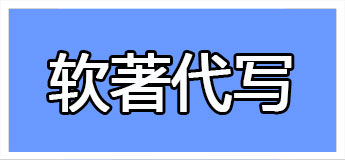
Title: Software Copyright: A Comprehensive Guide
Introduction
Software is an integral part of our daily lives, from the operating systems that run our phones and computers to the apps that we use for entertainment, communication, and productivity. It is therefore not surprising that software is eligible for copyright protection, just like any other artistic or literary work. In this comprehensive guide, we will explore the intricacies of software copyright, including what it is, who owns it, how to register it, how to protect it, and what to do in case of infringement.
What is Software Copyright?
Software copyright refers to the legal protection granted to the creators of software programs for original works of authorship that are fixed in a tangible medium of expression. In other words, software authors are entitled to exclusive rights to modify, distribute, reproduce, and display their works in any medium, subject to certain limitations and exceptions. These rights are granted under the copyright law of the country where the software is created or distributed.
Who Owns Software Copyright?
Software copyright is owned by the individual or entity that created the software, except in cases where it was created as a work-for-hire, in which case the owner is usually the employer or the client. In some cases, software copyright may be jointly owned by multiple authors, in which case, the terms of the joint ownership and the division of rights should be specified in a written agreement.
How to Register Software Copyright?
In most countries, software copyright is automatically granted the moment the software is created and fixed in a tangible medium of expression. However, registering the software with the copyright office provides additional legal protection and evidentiary benefits in case of infringement. Typically, the registration process involves filling out an online or paper application, paying a fee, and submitting a copy of the software code, along with other necessary information.
How to Protect Software Copyright?
To protect software copyright, the author should take reasonable precautions to prevent unauthorized access, use, or distribution of the software. For instance, the author may use encryption, password protection, or digital signature to prevent unauthorized copying or modification of the software code. The author may also include a copyright notice or license agreement in the software, specifying the terms and conditions for its use, and prohibiting or limiting certain acts that are not authorized by the author.
What to Do in Case of Infringement?
If a software author suspects that their work has been infringed, they should take immediate action to stop the infringement and seek compensation for damages. Typically, the author may send a cease-and-desist letter to the infringer, demanding that they stop using the software and compensate the author for damages. If the infringer fails to comply, the author may file a lawsuit in the court of law, seeking injunctive relief, damages, and attorney fees.
Conclusion
Software copyright is a vital component of the modern digital economy, providing legal protection and economic incentives for software authors to create and distribute their works. By understanding the intricacies of software copyright, authors can better protect their rights and enforce them in case of infringement.
上一篇:下载软件著作权申请表(下载软件著作权申请表:详解申请流程与注意事项)下一篇:销售计算机软件著作权(计算机软件著作权营销指南)
软件著作权说明书代写
一、《申请表》《说明书》《源代码》3个文档
二、300元/案子,3天内交付
三、电话/微信:139-9853-9835




